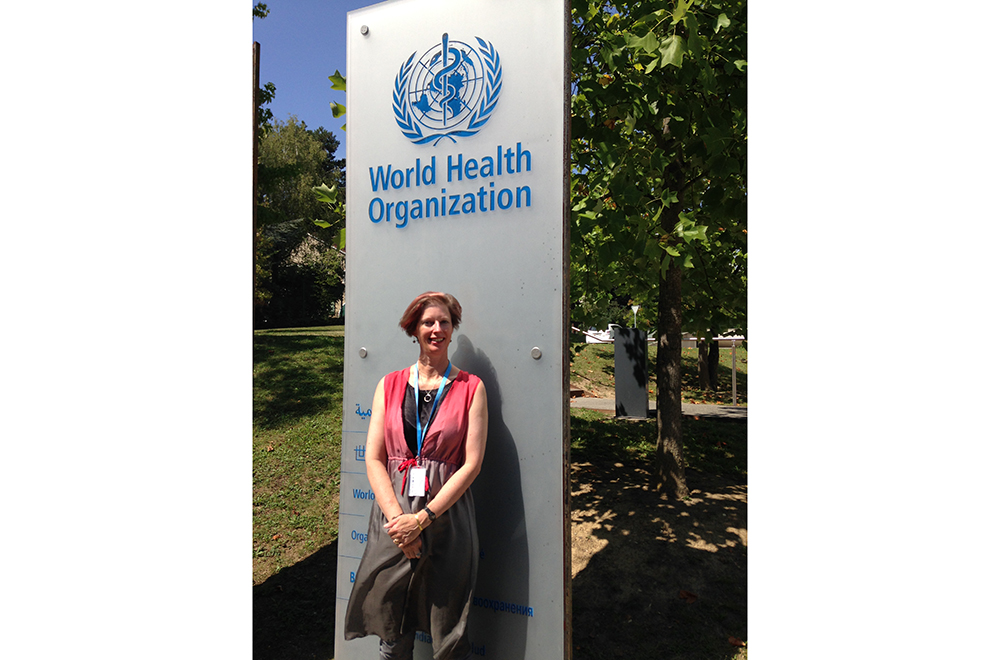Evidence confirms what AT practitioners and AT users have long known. Assistive products and services, or soft technologies which match and deliver them, are effective solutions to daily living problems. They enable people living with disability and people ageing into disability, to achieve their participation-based goals.
The World Health Organization (WHO) recently adopted a resolution intended to make AT more accessible worldwide, and called for six key actions to improve availability, standards, collaborations, R&D and more. WHO has also established the Global Access to AT (GATE) initiative to deliver AT to those who need it.
Swinburne University lecturer and occupational therapist Dr Natasha Layton (pictured) recently joined global researchers and educators at the Global Research, Innovation and Education in Assistive Technology (GREAT) Summit at WHO headquarters in Geneva, where discussion focused on service provision, research, education and training relating to AT policy, products, personnel, provision and use.
“Although participants work in different parts of AT development, supply, research and education chain, with very different AT products, there was a great sense of unity of purpose at the Summit”, Layton told F2L.
“All pieces of the AT puzzle are needed for AT to be appropriately delivered to those who need it. This guiding principle is evident across the 92 snapshots of scalable AT innovations which were shared at the summit,” she said.
The World Health Assembly (WHA) Draft Resolution on Improving Access to Assistive Technology, takes global co-operation on AT to a new level. Resolutions are proposed by member countries and become a powerful directive to governments and WHO to enact the Resolution objectives. The Draft Resolution was accepted on January 22, 2018 and the Final Resolution will be forward to the next WHA.
The Resolution called for WHO action at two levels. Firstly, it sets an agenda for member states to strengthen their AT policies and programs and to ensure trained AT practitioners and technical staff are available. Also, to secure AT access, consider a national AT list and promote research and cooperation across national borders, pursue barrier free environments and collect data on the need and benefit of AT.
Secondly, to develop a world report on AT; technical and capacity-building support to assist nations develop AT policies and programs; technical and capacity-building support: establishing regional / sub-regional manufacturing, procurement and supply networks for AT; develop minimum standards for AT and regular review and reporting on progress until 2030 to ensure enactment.
The ‘mainstreaming’ of assistive features within information and communication-based technologies, the rapid evolution of materials such as carbon fibre, and production methods such as 3D printing, has provided opportunities to address the under-realised potential of AT. “The last decades of AT research gave a good practice blueprint – the ‘technology chain’ of inclusive and accessible environments, a skilled AT workforce, and consumer-focussed policies – as necessary ingredients for great outcomes,” Layton said.
Australia is one of 175 Member States who have ratified the United Nations Convention on the Rights of Persons with Disabilities, with Articles 4, 20, 26 and 32 setting forth the obligation to ensure access to AT for an affordable cost and to foster international cooperation in order to achieve this.
Layton said from an Australian perspective it was clear that AT innovation does not rely on established R&D centres. Many examples of affordable and scalable technologies came from countries without manufacturing infrastructures, making AT products ‘in the field’ with sustainable materials, she said, supported by technologies such as the internet, CAD design and 3D printers attached to portable batteries. “From an AT design and deployment view, Australia has much in common with countries such as Africa, where AT products and services must serve sparse populations in similar physical conditions.”
According to Layton this is a call to arms to fully realise the potential of AT for all. Peak bodies such as ARATA are working with AT professional organisations globally to inform, support and contribute to these global endeavours, and to keep Australian stakeholders informed. ARATA stand ready to support the implementation of the Resolution should it be accepted by the WHA in late May this year.
Layton is one of the presenters for the education program at the ATSA Expo in Melbourne in May.
Responding to the WHO resolution, ATSA executive officer, David Sinclair told F2L it was pleasing that the provision of AT is receiving the focus and interest it deserves. “ATSA welcomes the recent statement from the WHO recognising the importance and impact to lives that AT has. This supports the changes implemented by Australian Governments to meet the United Nations Convention on Human Rights of Persons with Disabilities, following the introduction of the National Disability Insurance Scheme, MyAgeCare and the National Injury Insurance Scheme.”
He said the WHO has demonstrated its holistic understanding of the supply of AT, by ‘emphasizing the need for a comprehensive, sustainable and multisector approach to improving access to assistive technology that fulfills the safety and quality standards’, which is endorsed by ATSA. Sinclair believed that although some may think a statement from a world based organisation will have little or no effect here it would be a missed opportunity, “as Australia is a signatory to and contributor to the WHO.” According to Sinclair the WHO statement gives an insight of what over time will most likely become the policy and approach of Australian Government. He encouraged AT providers to take the time to read the statement and consider how they may need to shape their business for the future.
To add your voice and stand with global colleagues connect with GATE on: https://mednet-communities.net/gate/ and ARATA on: https://www.arata.org.au/

